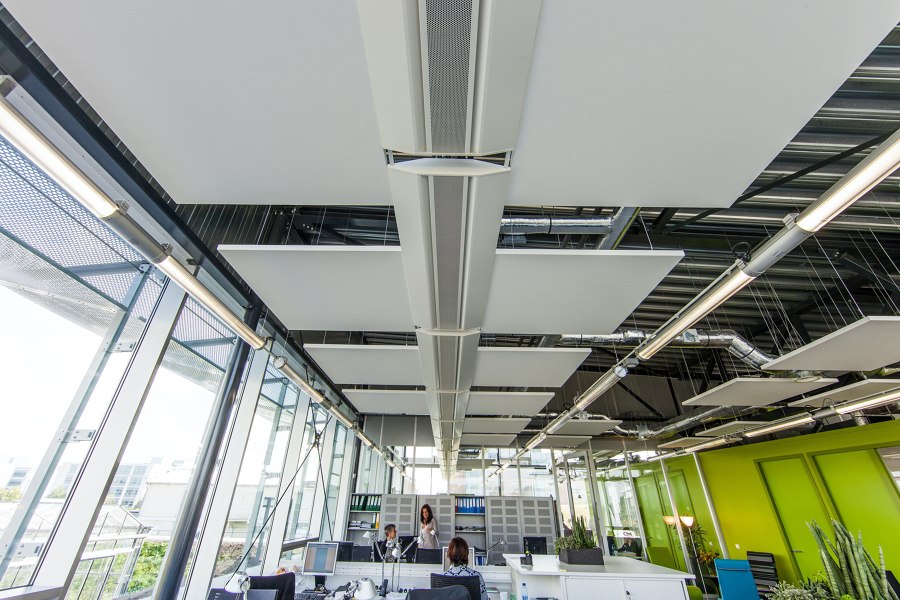Breaking the sound barrier: ROCKFON
Brand story by Harriet Thorpe
Hedehusene, Denmark
28.05.21
Acoustic solutions expert Rockfon’s regenerative circular design concept supports a sustainable manufacturing process that stands in opposition to the culture of 'take-make-waste'.
One of the first buildings in Denmark to achieve the highest certification in sustainable construction is the Nordea Headquarters in Copenhagen, which is equipped with white Rockfon® Mono® Acoustic ceilings
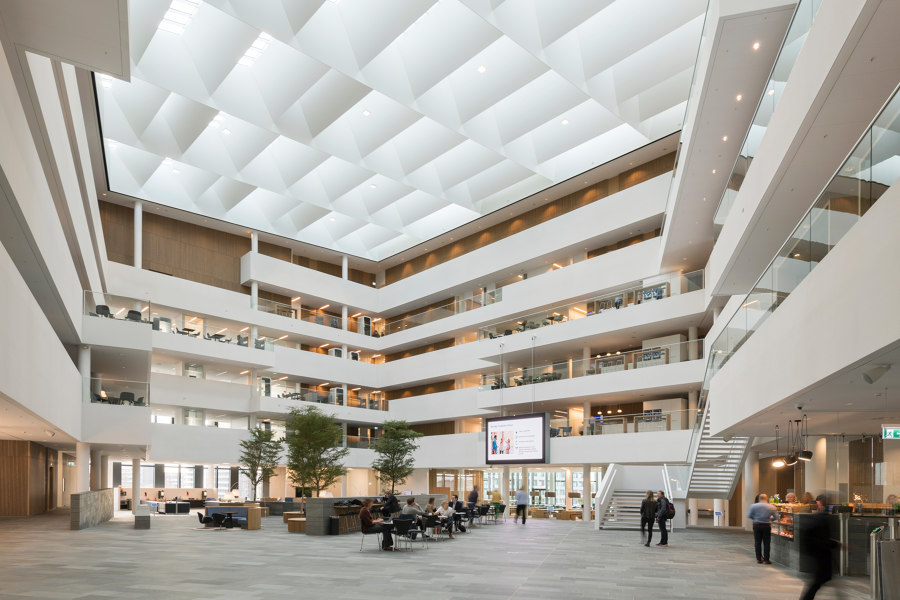
One of the first buildings in Denmark to achieve the highest certification in sustainable construction is the Nordea Headquarters in Copenhagen, which is equipped with white Rockfon® Mono® Acoustic ceilings
×The regenerative principles of circular design eliminate waste and pollution by keeping materials in use. In theory, it is the solution for our sustainable future, but how do we get there? To reach a truly circular economy, every collaborator in the supply chain has a responsibility. As an architect or designer, it is crucial to work with manufacturers who are employing circular thinking; not only making more sustainable products, but playing a more transparent and active role in the life-cycle of materials from extraction, to recycle, and reuse.
The Lysgården office in Norway is environmentally certified as a passive house, BREEAM Excellent certified and uses brand new technology based on the ambition to build the world's most modern office building
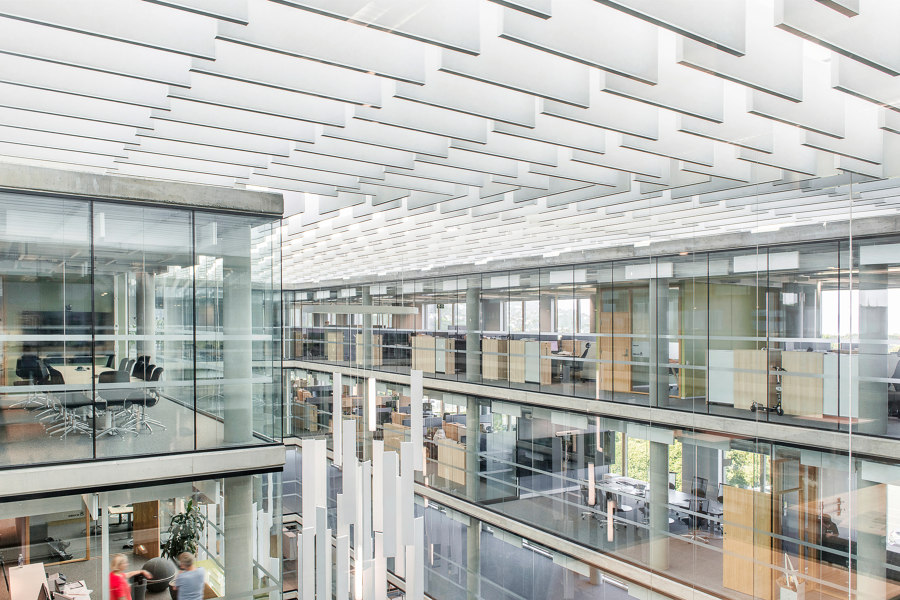
The Lysgården office in Norway is environmentally certified as a passive house, BREEAM Excellent certified and uses brand new technology based on the ambition to build the world's most modern office building
×Leading acoustics brand Rockfon is at the forefront of the much-needed shift to the circular economy. Making it as easy as possible for designers to meet their sustainability goals, Rockfon ensures each product performs on multiple levels, by engaging in green practices and safeguarding health. Rockfon communicates these benefits clearly through a variety of declarations and certifications, like their newly awarded Cradle to Cradle certification.
'We will see more and more products that have reuse, recycling and even upcycling at their core' Magdalini Psarra
Health and wellbeing in interior spaces have always been a priority for Rockfon. First and foremost, their ceiling tiles and wall panels enhance indoor acoustics and so increase comfort. Simultaneously, they also contribute to the performance of interior spaces by improving air quality, reflecting light and being fire resistant. Yet, Rockfon recognises that when designing for the circular economy, a product’s life-cycle extends far beyond its intended function within an interior’s design. That’s why today, material sourcing, recycling and reuse are just as important to understanding the sustainable profile of a product.
The Rockfon ceilings at the Riverside Leisure Centre in Chelmsord help balance the thermal mass energy saving benefit at the centre, which has been awarded a ‘very good’ BREEAM sustainability rating due to its energy efficient design
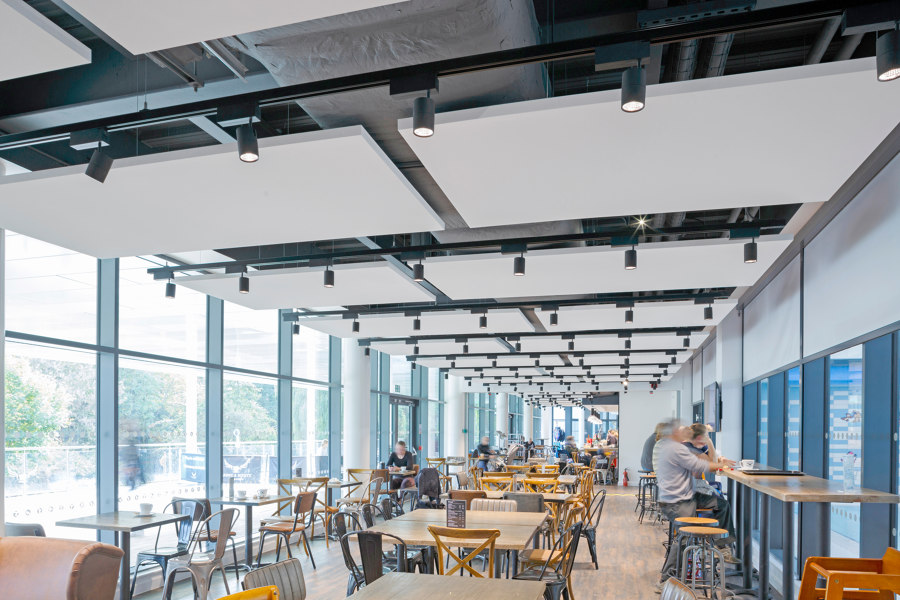
The Rockfon ceilings at the Riverside Leisure Centre in Chelmsord help balance the thermal mass energy saving benefit at the centre, which has been awarded a ‘very good’ BREEAM sustainability rating due to its energy efficient design
בThe whole concept of “take-make-waste” is not feasible any longer,’ says Magdalini Psarra, Public Affairs & Sustainability Manager at Rockfon. ‘A circular economy model, which is restorative and regenerative by design will be the leading trend and we will see even more products that have reuse, recycling and even upcycling at their core. It’s about not only focusing on one key element, but how small changes with regard to various parameters can have a significant impact on being sustainable.’
Rockfon takes a closer look at all of the stages of the products’ lifecycles, ensuring that actions are taken to improve each one of them. The key ingredient of Rockfon’s core product is stone wool. This abundant resource – a natural by-product of volcanic activity – is melted and then spun into natural fibres. As a ‘closed-loop’ material, stone wool can be recycled again and again without any degradation in quality. In 2020, ROCKWOOL Group, Rockfon’s specialist non-combustible stone wool insulation manufacturer, reclaimed 163,000 tonnes of stone wool waste (up from 152,000 in 2019). This includes stone wool waste from the construction and horticultural sectors, which were fed back into products – saving more primary resources from being used.
Rockfon Blanka®, a deep matt, super white acoustic ceiling tile, has been used at the Parallel office building in Oslo. The design met strict environmental requirements, and employee wellbeing was paramount

Rockfon Blanka®, a deep matt, super white acoustic ceiling tile, has been used at the Parallel office building in Oslo. The design met strict environmental requirements, and employee wellbeing was paramount
×Many manufacturers are taking recycling and upcycling into their own hands in an effort to divert construction waste from landfill. Consequently, designers are becoming more conscious of what happens to the materials after they are returned to the manufacturer too. Rockfon’s stone wool ceiling tiles and installation cut offs can be closed looped recycled into the same process that created them, which gives a strong advantage towards circular economy and it is better than downcycling into other products of lower value. Additionally, they upcycle waste from other industries that would otherwise be sent to landfill. This combined with their own recycling of stone wool waste results in a recycled content figure between 29% and 64%.
Rockfon Eclipse® islands bring acoustic comfort to the open plan building at Park 2020 Experience Center in Amsterdam (top). In Scotland, Moray Council employed the Eclipse® ceiling islands to work alongside skylights and directional air vents
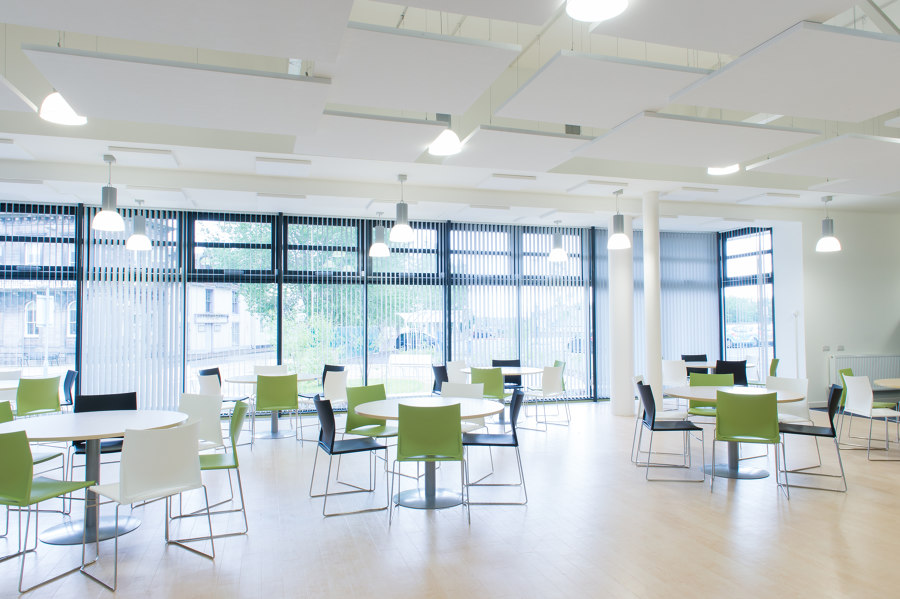
Rockfon Eclipse® islands bring acoustic comfort to the open plan building at Park 2020 Experience Center in Amsterdam (top). In Scotland, Moray Council employed the Eclipse® ceiling islands to work alongside skylights and directional air vents
×Annual green building construction spending is expected to grow 15% year on year (USGBC 2015), which is why Rockfon is clearly communicating the environmental benefits of its products to designers working towards building certifications such as LEED®, BREEAM®, DGNB®, WELL, HQE, Verde, Greenstar or similar. The clearly written and frequently updated Rockfon ‘Product Sustainability Declaration’ seeks to simplify the time-consuming documentation process for designers seeking sustainable credentials.
As Rockfon produces more new products than it gets back for closed loop recycling, additional raw material is needed. For this Rockfon is upcycling materials that would otherwise be landfilled. Watch more in the video
Rockfon’s recent achievement of Cradle to Cradle Certification is part of this mission. Recognising the brand’s holistic approach to sustainability, this international standard assesses products for environmental and social performance across five critical categories: material health, clean air & climate protection, product circularity, water and soil stewardship, and social fairness. For Psarra, this is the future of sustainability. ‘This aspect of taking responsibility, in every sense, will be a dominating factor and a vast topic, perhaps the biggest, when it comes to design, architecture, production, and choice of materials.’
© Architonic





